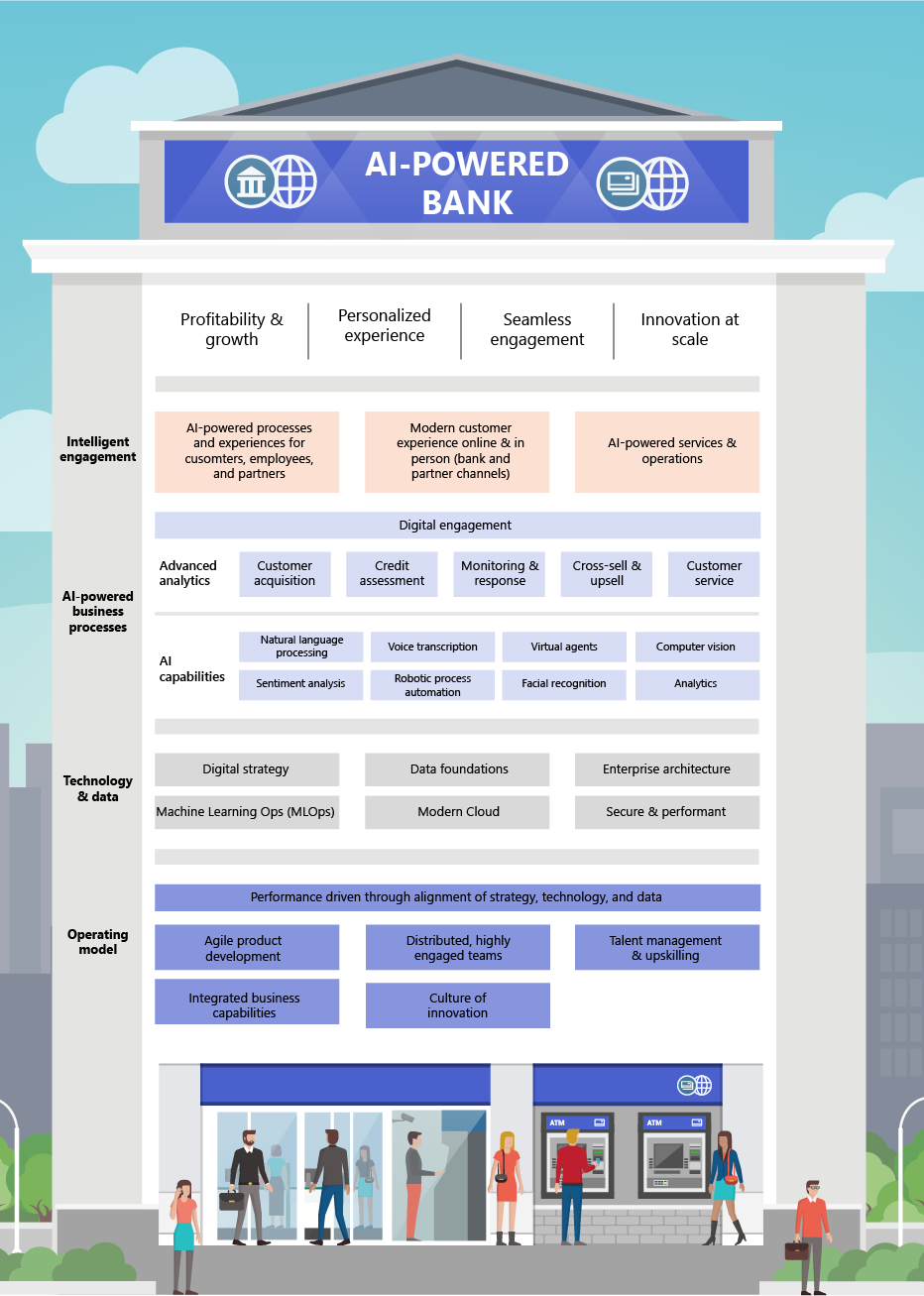5-minute read
Quick summary: 3 ways financial services organizations can learn from their counterparts in telecom to accelerate towards their AI digital transformation goals
Recently I read the results of a survey among global banking executives in which 46 percent of respondents said that leveraging AI will help them achieve their business goals “to a great extent.” As I considered this report and the perspective it offers on AI digital transformation for financial services organizations, I recognized a tremendous amount of overlap between their paths and our firm’s recent work with a telecom industry leader.
In this article, I take a closer look at some insights from our work in the telecom industry and explore how they can help financial services firms achieve their AI digital transformation goals.
What can telecom teach financial services about AI?
At first glance, the telecommunications and financial services industries appear to have little in common. However, upon closer inspection, several key similarities become clear.
Both industries have long histories
Many of the largest telecom companies were founded in the early 20th century, and several financial services firms have had a similarly long—or longer—lifespan. As a result, many players in both industries are currently dealing with the limitations of legacy technologies that could be holding them back from maximizing the benefits of AI.
Both industries are highly regulated
Telecom and financial services are two of the most heavily regulated sectors in the world. Thus both industries require a mindful approach to AI that encompasses compliance with regulations at the industry, state, federal, and international levels.
Both industries serve consumers who expect personalized experiences
Customers of both telecom and financial services companies expect the same level of personalization they experience with digital leaders such as Amazon and Netflix. Organizations in both industries that leverage AI to meet (or exceed) these expectations create a competitive advantage for themselves in their respective, highly competitive markets.
Lesson 1: Create authentic connections between employees and your vision to fast-track AI digital transformation
When we began working with this telecom provider, they had just brought in a new CEO who had a clear vision of where he wanted to take the organization. What made him unique was that he was equally committed to building authentic connections between every employee and the goal he wanted to achieve.
This CEO’s vision became an integral part of everyday life for every team across the organization, working its way into every conversation, every sprint planning session, and every product launch plan. As their partner, we were working alongside those teams, thus the “rallying cry” of the CEO’s vision had a significant impact on our collective efforts to achieve the company’s AI digital transformation goals.
So I invite you consider this question: What is the “rallying cry” behind your vision for your organization’s AI digital transformation, and how many employees have committed it to memory? When you reach the point where every single team member has a personal connection with the goals you’ve set, it’s like adding a turbo boost to your AI digital transformation journey.
Lesson 2: To elevate consumer engagement, focus on AI-powered end-to-end experiences
Having laid out the elements for achieving their CEO’s vision, our telecom partner began exploring ways to keep the momentum going, starting with the “front lines”—teams that engage directly with customers.
The company had already devoted substantial resources to optimizing its mobile channels to better serve today’s mobile-first customers, but channels continued to operate in silos They partnered with us to build consolidated data and technology pipelines that aligned multiple mobile channel solutions under a single engagement model, leveraging solutions we had built using AI and machine learning. By pivoting from a channel-by-channel model to a perspective focused on end-to-end experiences powered by AI, they uncovered new possibilities in enhancing their customer relationships and driving customer loyalty.
Financial services organizations can draw insights from this experience by embracing a broader perspective to create outstanding customer experiences. Think beyond your website and your applications to consider what else you could be doing. Consumer touchpoints such as SMS, RCS, WhatsApp, and Telegraph, just to name a few, have optimized their digital experiences, which you can leverage to better serve your customer base. When new channels are integrated seamlessly into your digital ecosystem, you can leverage AI-powered customer insights to create a personalized end-to-end experience for every customer.

Lesson 3: To deliver exceptional outcomes, think like a product team
Establishing and cultivating a “product team culture” can benefit financial services organizations just as it does telecoms. Unlike project teams, product teams focus on the end result—what gets delivered to end users and the extent to which it satisfies their needs and meets (or exceeds) their expectations.
For our telecom partner, building a product team culture led to a shift in performance measurement to focus more heavily on customer satisfaction KPIs, especially net promoter scores (NPS). Every team focused on front-line services—including product engineers as well as customer care agents—assessed those KPIs on a regular basis and raised the question “What actions can we take to move the needle?” with a focus on the AI solutions available to them. This shift in perspective propelled a continuous effort to improve the quality of customer experiences.
When financial services teams consider how to advance towards their AI digital transformation goals, thinking in terms of products—what they want to deliver and how it will positively affect customers—is key. This goal should be the “North Star” to which all AI digital transformation efforts should point, and it’s essential that all teams are on board with the effort.
It all starts with connection
Let me wrap up this article by returning to the concept of authentic connection. Of all the ideas we explored above, this one delivers the biggest impact in accelerating your organization towards your AI digital transformation goals. When people have an authentic connection with a mission, they get excited about it. They’re willing to go above and beyond in the effort to reach a common goal.
So as you contemplate your organization’s own journey, the question I invite you to consider is this: How will you build the authentic connections you need to accelerate progress towards your AI digital transformation goal?

Creating competitive advantages in financial services

Travis Jones is the COO at Logic20/20.

